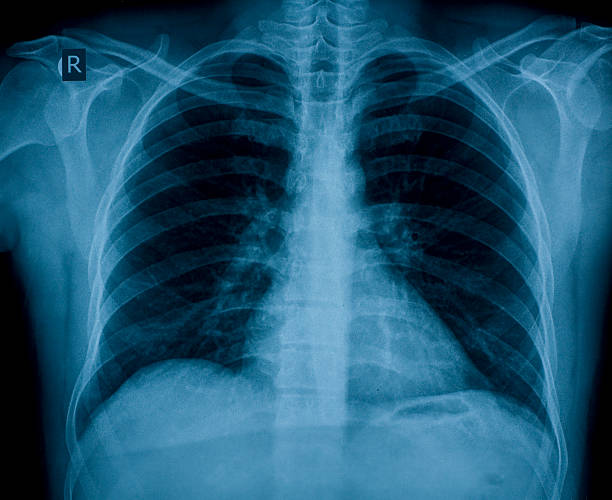X-rays are a type of radiation called electromagnetic waves. X-ray imaging creates pictures of the inside of your body. The images show the parts of your body in different shades of black and white. This is because different tissues absorb different amounts of radiation. Calcium in bones absorbs x-rays the most, so bones look white. Fat and other soft tissues absorb less and look gray. Air absorbs the least, so lungs look black.
The most familiar use of x-rays is checking for fractures (broken bones), but x-rays are also used in other ways. For example, chest x-rays can spot pneumonia. Mammograms use x-rays to look for breast cancer.
When you have an x-ray, you may wear a lead apron to protect certain parts of your body. The amount of radiation you get from an x-ray is small. For example, a chest x-ray gives out a radiation dose similar to the amount of radiation you're naturally exposed to from the environment over 10 days.
X-ray technology is used to examine many parts of the body.
.jpeg)

Bones and Teeth:
Fractures and infections. In most cases, fractures and infections in bones and teeth show up clearly on X-rays.
Arthritis. X-rays of the joints can show evidence of arthritis. X-rays taken over the years can help your healthcare team tell if your arthritis is worsening.
Dental decay. Dentists use X-rays to check for cavities in the teeth.
Osteoporosis. Special types of X-ray tests can measure bone density.
Bone cancer. X-rays can reveal bone tumors.
Chest
Lung infections or conditions. Evidence of pneumonia, tuberculosis or lung cancer can show up on chest X-rays.
Breast cancer. Mammography is a special type of X-ray test used to examine breast tissue.
Enlarged heart. This sign of congestive heart failure shows up clearly on X-rays.
Blocked blood vessels. Injecting a contrast material that contains iodine can help highlight sections of the circulatory system so they can be seen easily on X-rays.
Abdomen
Digestive tract issues. Barium, a contrast medium delivered in a drink or an enema, can help show problems in the digestive system.
Swallowed items. If a child has swallowed something such as a key or a coin, an X-ray can show the location of that object.
What should I expect after an X-ray?
If you received contrast dye before your X-ray, you should drink plenty of water to flush the contrast material from your body. Some people have side effects from contrast dye, which may include:
Nausea or vomiting.
Stomach cramps or diarrhea.
Headaches.
Rarely, allergic reactions to contrast material can occur. People who have allergies or asthma are more likely to have an allergic reaction to contrast dye. Talk to your provider about your risk of a reaction, and call your provider right away if you have unusual symptoms.